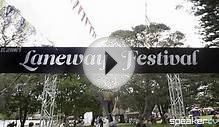
Mention the word Croatian, to anyone in Chicago, and the next thing they'll say is Velika Gospa. Truly, Velika Gospa and being Croatian go hand and hand. Velika Gospa (August 15th) is to Croatians what St. Patrick's day is to the Irish or Columbus day is to the Italians.
The tradition of Velika Gospa originated in the town of Sinj, a Dalmatian province in Croatia. History tells us that in the year 1715, the barbaric armies of the Turkish empire were advancing toward the town of Sinj. Their plan was to capture Sinj and to press forward. In time the Turks hoped to besiege Vienna and ultimately to conquer all of Europe. The people of Sinj fearing certain annihilation in face of overwhelming odds, implored the intervention of the Blessed Mother. In their church, throughout the night of August 14th, they prayed before the portrait of the Virgin Mary then called "Our Lady of Grace." The following morning, (Assumption Day) August 15th, an apparition of a beautiful lady appeared in the sky which everyone recognized as the Blessed Virgin Mary. The Turkish soldiers became violently ill, they were unable to cross the river to Sinj and thus retreated. Thru Our Lady of Sinj's miraculous intervention the attack was repulsed and the powerful armies of the Turkish empire were in flight. The Turks never returned to Sinj.
In gratitude for so great a victory, against so superior a force, the Croatians increased their love and devotion to Our Lady. The people attributed this miracle to the Lady of Sinj and drapped gifts of gold upon her beloved image as proof of her help and the peoples confidence in her. They rebuilt a larger church and it became the outstanding Marian shrine for all of Dalmatia.
For more than 200 years the Croatians have maintained a special love and devotion to Mary. To this day, thousands of pilgrims, especially from Dalmatia and Bosnia, make the annual pilgrimage to the church in Sinj. They come to ask for help in their hour of need, to give thanks for favors received and to honor the Virgin Mary.
Around the early 1900's, Croatians started setteling in the Bridgeport Area. By 1910 they numbered almost 5000. Most of the new arrivals were from Dalmatia, many from the area close to the town of Sinj. In 1906, a small group of men gathered and formed a fraternal society for social and cultural purposes. The name was to be: The Dalmatian Family Society of the Miraculous Lady of Sinj. The society provided its members with badly needed health insurance and death benefits. The society, became a place for new immigrants to bond. Within a few years the society's membership grew to over 600.
The year 1912 saw the blessing of a new parish for Bridgeport. St. Jerome Croatian Parish opened its doors. It quickly became the home to the 600 plus members of Gospa Sinjska Society. It was at this time that the Bradarich Brothers brought to St. Jerome's a copy of the icon of Our Lady of Sinj. In the church, a side altar was built and dedicated to her honor. How happy were the Croatian people to once more pray before the image they had venerated in their homeland!
Now, having a church and the replica of Our Lady of Sinj, it was decided to follow tradition. As in Europe, a procession with the image of Our Lady carried through the streets was to take place on August 15th. The first Velika Gospa procession was on August 15th, 1913. The Procession started at 9:00 AM from Germania Hall to St. Jerome Church for a Solemn High Mass. All society members participated in the march. Members not attending the August 15th procession were fined $2.00. Three flags were carried, flowers were purchased for each man's lapel and a band was hired to lead the procession. After the Mass, there was a banquet with entertainment and dancing until midnight.
Within a few years other societies joined in the Velika Gospa procession. Among them were: St. George, patron of Poljica C.C.U., St. Jerome C.C.U., St. Jerome Holy Name Society, Our Lady of the Rosary C.F.U., young Ladies Sodality, St. Mary of Cres, St. Anthony C.C.U. and St. Theresa Altar and Rosary Society.
In keeping with tradition, as in Croatia, after the procession and participation in the High Mass there come festivity in the form of a parish picnic. The original picnics were held in the church grove behind the church hall and on 28th place. Velika Gospa became synonymous with barbecued lamb and other Croatian delicacies. In the 1950's the men of the parish roasted as many as a 100 lambs. People came from all over Chicago to purchase this lamb, often waiting hours in line. The men of the parish worked through the entire night so the lamb would be ready to sell by 8 AM. Along with the lamb, came the sale of Croatian food and pastries. These were prepared by the women of the Altar and Rosary Society. These women cooked for an entire week at the church hall in preparation for the feast. With the mostaccioli, rizot, sarma, beef and chicken dinners ready, they began work on the fresh pastries. They turned out numerous strudels, poviticas (walnut cakes) and hundreds of fritula. The only time away from the kitchen was while walking in the procession and attending mass. Most of these original immigrant Croatian women came from small remote villages and were unskilled in the art of baking delicate pastries. It was Mary Mandich, the president of the Altar and Rosary Society, who organized these women and taught them the skills needed to bake strudels and poviticas. For over 75 years, these ladies handled the preparation of the dinners and pastries for this famous feast.
YOU MIGHT ALSO LIKE












